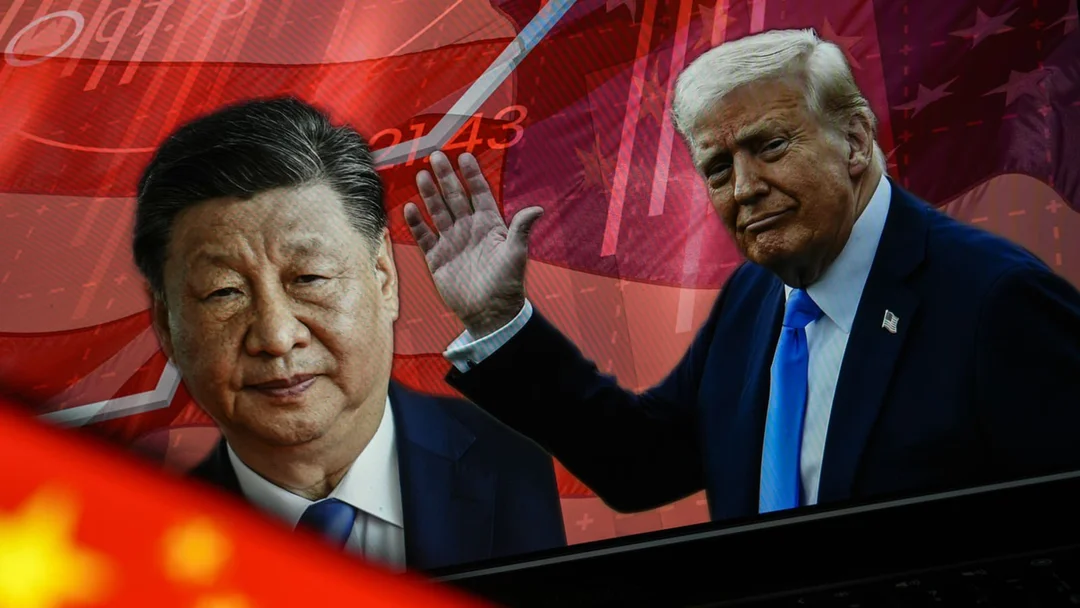
Is the U.S.-China Trade War Reaching a Boiling Point?
In a dramatic escalation of tensions, the ongoing trade conflict between the United States and China seems to be reaching a critical juncture. With tariffs soaring as high as 245% on certain Chinese goods, questions arise about the implications for both economies and the global market.
Recent reports indicate that the U.S. has significantly raised tariffs on Chinese exports, with President Donald Trump declaring a comprehensive probe into critical minerals necessary for technology and manufacturing. This latest move appears to be part of a broader strategy to leverage trade as a tool of foreign policy, pushing China into a corner.

In an almost tit-for-tat fashion, China has responded robustly—raising tariffs on U.S. imports to a staggering 125%. However, Chinese officials have recently declared their intent to stop retaliating against U.S. tariffs, labeling them as "meaningless." Instead, Beijing has pivoted towards targeting American services, signifying a potential expansion of the conflict beyond just goods.
As analysts note, China's recent moves, including tighter export controls on rare-earth minerals and probes into U.S. tech companies such as Google and DuPont, highlight a strategic shift to leverage its economic power more effectively. Wendy Cutler of the Asia Society Policy Institute commented, "Beijing is signaling to Washington that two can play in this retaliation game and that it has many levers to pull." This escalation poses a daunting challenge for U.S. businesses operating in China.
The service sector could experience significant disruptions, with implications for industries ranging from legal consulting to education. China's social media has hinted at potential restrictions targeting American firms in these sectors, aiming to recalibrate the balance of trade, where the U.S. currently enjoys an advantage.
However, it is crucial to consider the long-term outcomes of these actions. Some estimates suggest that reduced Chinese tourism and educational exchanges could cost the U.S. economy billions. For instance, over 270,000 Chinese students contribute significantly to U.S. universities, and a decline in their numbers could have ripple effects throughout the academic landscape.
On the other hand, there are voices suggesting that this escalating conflict reflects a broader systemic divergence rather than mere transactional tensions. Analysts including Jing Qian have warned that these actions could lead to a deeper decoupling of the two economies, affecting not just trade but also people-to-people ties and knowledge exchange.
As both nations navigate this fraught landscape, the path ahead remains uncertain. While there is a possibility for negotiations, time is running out, and the stakes have never been higher. Will the U.S. and China find common ground before the situation escalates further? Or are we witnessing the beginning of a prolonged economic showdown? Your thoughts are welcome; how do you perceive the unfolding events?
Join the conversation in the comments below!
Related issues news
What tariffs does China have on the US?
After imposing 125% tariff on American goods on 12 April, 2025, China said that if the United States imposes further tariffs on Chinese products, it will ignore them, because it has already become impossible for the Chinese market to accept U.S. imports at the current tariff levels.
What are the current Chinese tariffs?
China's tariffs on US goods stand at 125 percent, but Beijing has also taken other non-tariff punitive measures, including limiting the release of Hollywood films. Economists have said that Trump's tariffs, if not eased, will bring a halt to most trade between the US and China due to the exorbitant rise in costs.
Does China have tariffs?
China Customs assesses and collects tariffs. Import tariff rates are divided into six categories: general rates, most-favored-nation (MFN) rates, agreement rates, preferential rates, tariff rate quota rates, and provisional rates. As a member of the WTO, imports from the United States are assessed at the MFN rate.
How much of US imports are from China?
After Canada and Mexico, China is America's third largest trading partner. US imports from China totalled $438.9bn while its exports the other way tallied in at $143.5bn.